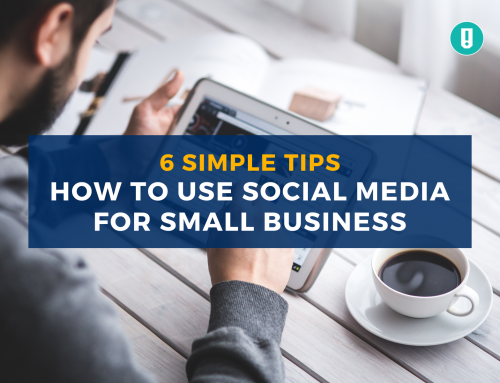On August 15-18 the 47th anniversary of Woodstock will be celebrated, a watershed moment for we Baby Boomers in the 60s, when nearly half-a-million young people gathered on a farm in upstate New York for a festival of ‘Peace and Music.’ Woodstock was also notable as one of the early examples of word-of-mouth marketing’s power, long before there was internet, cell phones, social media or any other high-tech tools to propel a viral explosion.
With a modest marketing budget, and equally modest goals of attracting some 200,000 concert attendees to the planned three-day event, Woodstock greatly exceeded all expectations, drawing crowds so large that the New York State Thruway was nearly overwhelmed, though it was never “officially” closed as Arlo Guthrie famously said from the stage.
Today we have so many more resources available to spread the word about our businesses, to get people talking and draw them to our special customer experiences. Yet for many small businesses word-of-mouth marketing, while recognized as the most powerful way to market, remains poorly understood, ineffectively managed and sadly too often left up to chance. This got me thinking about the intersection of word-of-mouth marketing and rock ‘n roll.
Andy Sernovitz, author, consultant and former CEO of the Word of Mouth Marketing Association, in his book Word of Mouth Marketing, one I highly recommend, teaches five basic principles of successfully implementing and managing a word-of-mouth marketing effort. He calls them the ‘five Ts of word of mouth:’
- Talkers: Find people who will talk about you
- Topics: Give people a reason to talk
- Tools: Help the message spread faster and further
- Taking Part: Join the conversation
- Tracking: Measure and understand what people are saying
In honor of Woodstock, let me share how rock ‘n roll can bring Sernovitz’s five Ts of word-of-mouth marketing to life and make it effective for your small business.
As Bruce Springsteen sang in No Surrender, “We learned more from a three minute record than we ever learned in school.” Let the music inspire you:
TALKERS: “By the time we got to Woodstock, We were half-a-million strong” Joni Mitchell in Woodstock
To make word of mouth successful, the first thing needed is to identify those among your network of customers, friends, and fans that will carry your messages forward. You have to know your customers and know them well, which is where small businesses have it all over the big ones.
It is more than just having a database of names and addresses, though too many small business don’t even have that. It means talking with people, learning their needs and encouraging them to sync up with you by signing up for your newsletter or blogs, liking you on Facebook, following your Instagram, Pinterest and/or Twitter posts.
Chances are that the majority of your customers are Facebook users, with Pew Research finding 71% of all American adults are using Facebook. And social-media engaged customers rises as age declines, with 90% of 18-29 year olds active, as compared with 65% of those aged 50-64 years. But even a majority of ‘oldsters’ are using social media.
TOPICS: “Let’s give ’em somethin’ to talk about (Somethin’ to talk about)” Bonnie Raitt in Something to Talk About
How to “Give ’em somethin’ to talk about” is the message that Seth Godin so eloquently focused on in The Purple Cow. It’s that you must do something remarkable, that people will not just notice, but will talk about. And being remarkable isn’t necessarily about being remarkable to everybody, but to those special customers who will really appreciate your remarkability and remark on it.
So in our businesses we have to do something truly remarkable, not just making a satisfied customer – too low a bar and boring – but creating a passionate, enthusiastic customer who will take the initiative to spread the word.
It means stepping outside your comfort zone and into your customers’ delight zone where they feel you have done something truly, uniquely, personally special for them, which they in turn want to, need to share.
TOOLS: “Walk this way! Talk this way!” Steven Tyler and Joe Perry, Aerosmith in Walk This Way
Businesses need to show their customers how to “walk this way” and how to “talk this way” to spread the word. It means providing an easy format through which your delighted customers can easily send it out. A concise and consistent branding platform that is memorable and unique can go far to power word-of-mouth. Don’t just be a ‘gift shop,’ be the store that does gifts in a brand new way and that talks about that difference in a variety of social media posts and newsletters that invite sharing.
For example, every morning on Facebook I am greeted by a beautiful picture, and some days several, of the Beekman farm from Beekman 1802, the company founded by the ‘Beekman Boys’ Brent Ridge and Josh Kilmer-Purcell.
Brent and Josh reject the ‘lifestyle brand’ label, in favor of being a ‘living brand.’ Their daily picture postings invite you into their lives and to share their pictures with your friends, not as a strong-armed way to market Beekman 1802, but simply because the pictures are so remarkably beautiful and inspiring. And so the story of their living Beekman 1802 brand goes forward.
TAKING PART: “I’m running with the pack” Paul Rodgers, Bad Company in Run with the Pack
Once you got people talking, you must “run with the pack” and participate in the conversation. Thus your word-of-mouth program goes in a ‘virtuous circle,’ an endless feedback loop of sending out messages, listening to the messages that come back, then reinforcing the messages with more messages.
It’s why Amazon.com asks every one who places an order to post a review. It’s why Brent, Josh or a member of the Beekman 1802 team ALWAYS replies to comments on their Facebook postings.
It’s something easy to do, as easy as saying “Thank you” to a customer after a sale, but in a new way and through a new medium.
TRACKING: “The answer my friend is blowin’ in the wind, The answer is blowin’ in the wind” Bob Dylan in Blowin’ in the Wind
And finally the “answer is blowin’ in the wind.” You have to listen to everything that is being said to you and about you. You have to search blogs and posts, listen carefully to all the feedback coming in and act upon it. As a researcher, I am committed to formal market research methodologies, like surveys and qualitative interviews, but you don’t need research training to ask your customers what they think and record what they feel.
Small businesses have a huge advantage in tracking customer input through the regular and frequent face time they get with their customers. But too often, businesses don’t have devices in place or the discipline to record what their customers are saying and what they heard.
It can be as simple as keeping a notebook by the cash register to record customer comments or as formal as an annual tracking study to measure customer behavior and preferences; but what is critically important is to put a mechanism in place to track raw customer input and then act upon it.
It’s human nature to recall the things we hear that we want to hear, and ignore or conveniently forget that which doesn’t conform to our expectations. We can’t afford not to make a record of all comments, good, bad, off-the-wall and out-of-the-box, because this is where truly innovative, original ideas for your business can be found.
About the Author
Pamela N. Danziger, Author & Founder of Unity Marketing
Speaker, author, and market researcher Pamela N. Danziger is internationally recognized for her expertise on the world’s most influential consumers: the American Affluent. Her new book, Shops that POP! 7 Steps to Extraordinary Retail Success, reveals the secrets to crafting a retail shopping experience that’s irresistible to high-value shoppers. As founder of Unity Marketing in 1992, Pam leads with research to provide brands with actionable insights into the minds of their most profitable customers.
Pam received the Global Luxury Award for top luxury industry achievers presented at the Global Luxury Forum in 2007. She was named to Luxury Daily’s Luxury Women to Watch in 2013. She is a member of Jim Blasingame: The Small Business Advocate’s Brain Trust and a contributing columnist to The Robin Report.






Leave A Comment